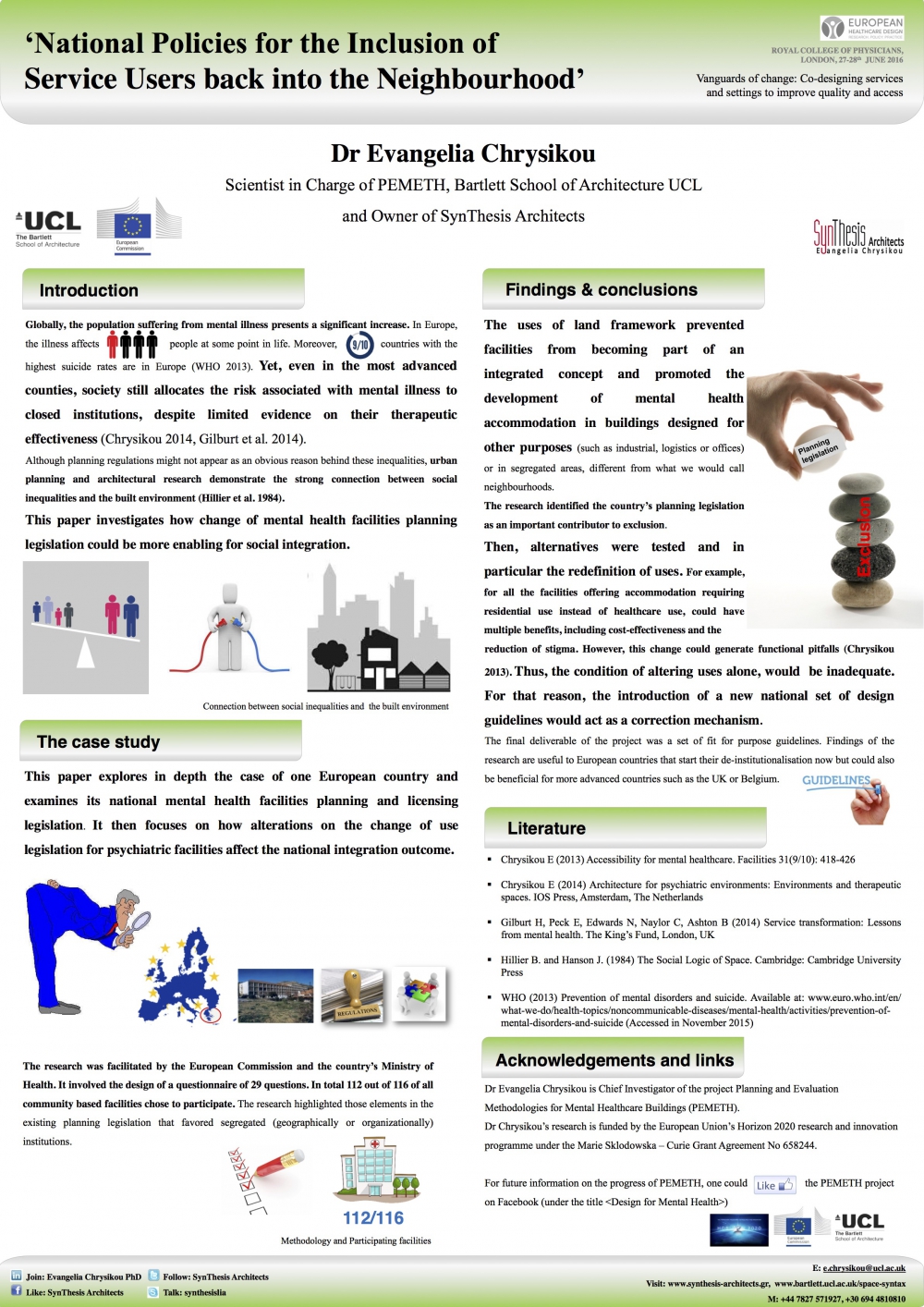Healthcare / Behavioural change
European Healthcare Design 2016
National policies for the inclusion of service users back into the neighbourhood
By Dr Evangelia Chrysikou | 03 Aug 2016 | 0
Mental illness affects one in four people in Europe at some point in their life. Moreover, nine in ten countries with the highest suicide rates are European. Yet, society still allocates the risk associated with mental illness to closed institutions, despite limited evidence of their therapeutic effectiveness.
Abstract
Even in the most advanced countries, institutions can still be segregated from the urban grid; this might be so even if buildings are small in scale and organisationally belong to what is called community care. This contradicts social psychiatry, undermines European principles of health and equality, and ignores the directions of the World Health Organization. Urban planning and architectural research by scholars such as Marcus or Hillier demonstrate the strong connection between social inequalities and the built environment.
The paper investigates how a change in mental health facilities planning legislation could be more supportive for social integration. It explores the case of one European country and examines its national planning and licensing legislation in relation to mental health facilities. It focuses on how alterations to change-of-use legislation for psychiatric facilities affect the national integration outcome.
The research was top down, facilitated by the European Commission and the country’s Ministry of Health. In total, 112 out of all 116 community-based facilities in the country participated. The research highlighted those elements in existing planning legislation that favoured segregated (geographically or organisationally) institutions.
The uses-of-land framework prevented facilities from becoming part of an integrated concept and promoted development of mental health accommodation in buildings designed for other purposes or in segregated areas, different from what we would call neighbourhoods.
The research identified the country’s planning legislation as a key contributor to exclusion. Alternatives were tested and, in particular, the redefinition of uses. This change generated functional complications, and the condition of altering uses alone proved inadequate.
Yet, the introduction of new national design guidelines could act as a correction mechanism. The final deliverable of the project was a set of fit-for-purpose guidelines. The research findings may be useful to European countries at the start of their process of deinstitutionalisation of mental health facilities, but they could also be beneficial for more advanced countries, such as the UK or Belgium.
Organisations involved

